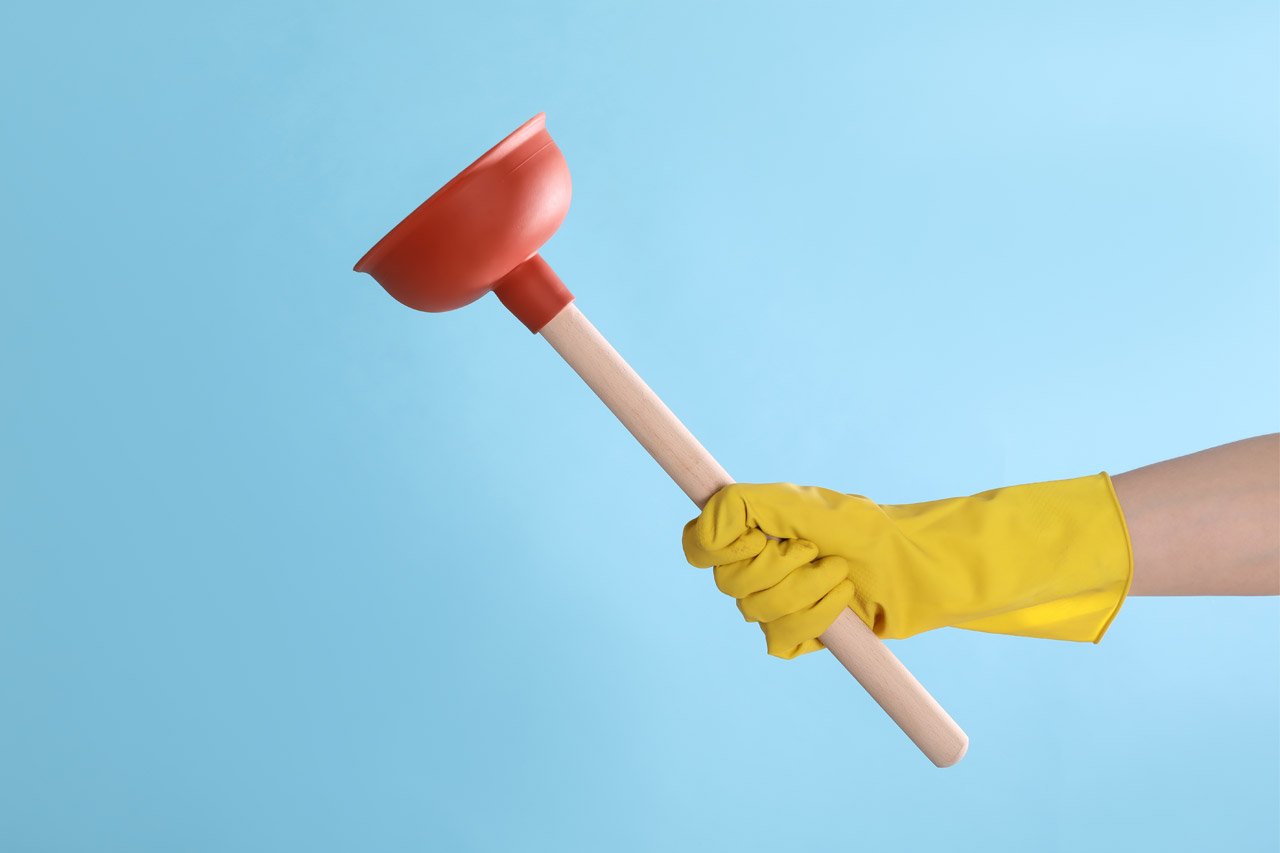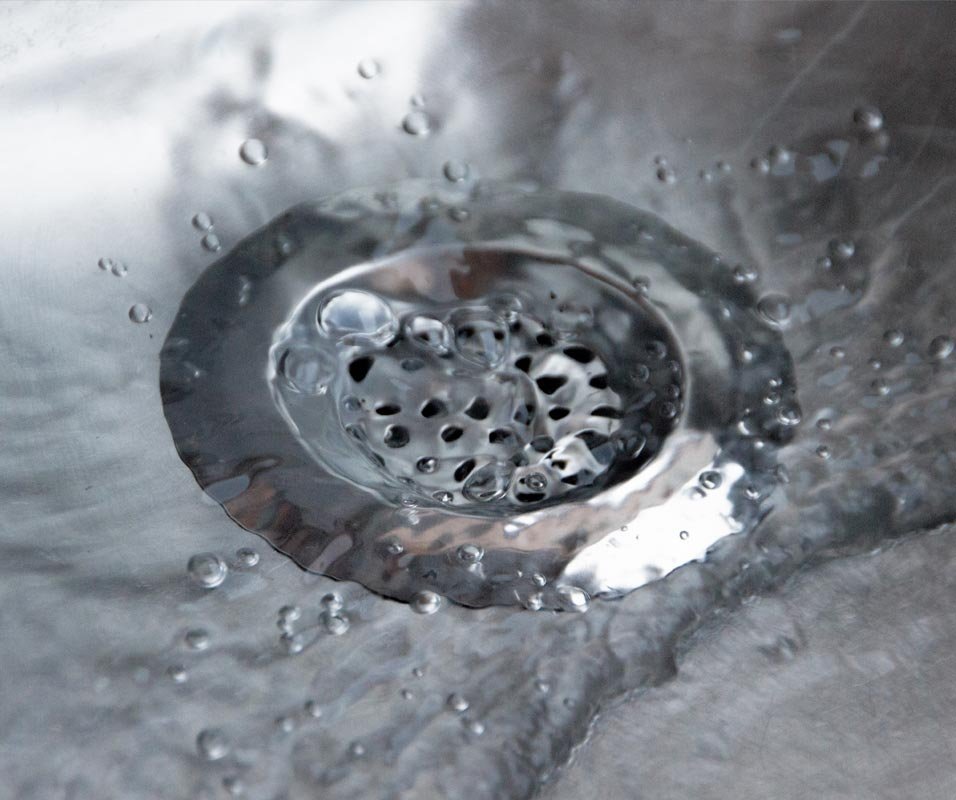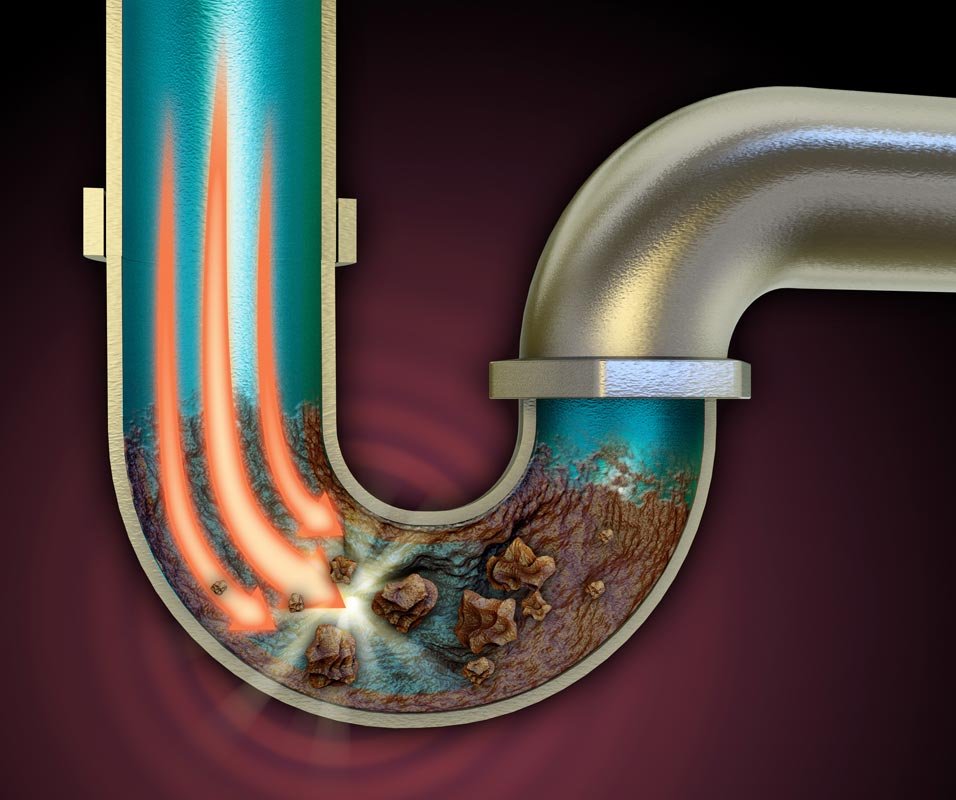Clogged drain - how to deal with it?
24 February 2023

Clogged bathtub drain
Blocked up bathtub drain can have various causes. Sometimes it’s the result of infrequent cleaning - in this case, thick dirt deposited in the drain doesn’t allow water to run through. Another reason is soap residue remaining in the drain, or scale deposits if the home has hard water. But the most common cause of this issue is tangled hair lingering in the drain. What home remedies for a clogged drain work best then?
Clogged linear drain
How to unclog a bathtub or shower tray drain?
Dealing with a drain is the fastest if we know the cause of the blockage - the same approach doesn’t always work. If the blockage was formed by soap, then pouring several liters of boiling water down the drain will do the trick. For scale and harder deposits, a solution of water and vinegar is helpful. Just add vinegar to boiled water and pour it down the drain. If this isn’t enough, the solution can be strengthened. In this case, pour baking soda into the drain and then pour vinegar. A chemical reaction will occur between these two substances and foam will come out of the drain. Also, the traditional rubber plunger can come in handy here.
When home remedies fail and the bathtub drain is still blocked up, it’s time for chemical products. These are in the form of sodium hydroxide gel or granules. They are valued for their swift effectiveness, but when using them, we have to follow the manufacturer’s instructions - they are corrosive, and improper use can result in burns.
For blockages that are difficult to unclog or are formed deeper, what works great is the well-known spring wire (other names: spiral or snake). It’s a coiled steel wire with a sharp tip and a crank on the other end. By turning the crank, the spiral is gradually introduced into the pipe. With each turn it enters deeper and opens the pipe. It’s the spring wire that is most often used by a plumber if called to fix the failure.
How to unscrew the shower or bathtub outlet?
To determine what is causing the blockage in the bathtub or the shower tray, we need to unscrew the outlet. First, remove the trap cover. Even without much visual inspection, you will be able to see what led to the problem. Many modern traps are equipped with the click-clack mechanism. It’s a trigger that quickly opens and closes the drain. To get to the trap in such a situation, all you need to do is remove the click clack plug. This will work for both clogged shower tray drain and bathtub drain.
How to unclog the floor drain under the bathtub?
If the blockage occurs in the drain under the bathtub, it can be more troublesome, for example because of difficult accessibility. It’s often recommended to immediately reach for chemicals, and indeed this is the easiest way. But it’s not necessarily the best solution - many floor drains are made of stainless steel, which when in contact with corrosive agents, gets corroded and rusty.
If we have such a floor drain in the bathroom, getting rid of the blockage manually by means of the aforementioned spring wire is a better option. Deciding to use chemical drain cleaners, we need to be very careful.
A linear drain is an alternative to the traditional shower tray. When deciding on this solution, the shower enclosure is installed directly on the floor. A linear drain is often used, for example, with walk-in shower enclosures. Also in this case, a blockage can occur, and the causes are the same as when it comes to the bathtub or the shower tray.

Should there be standing water in the linear drain?
If the linear drain works properly, water should be able to flow freely. This means that when there is standing water, there’s an obstruction. There should be no water in the drain channel nor on the tiles. Seeing that it flows slower than before or even stands in the drain, we need to take steps to remove the blockage.
How to clean the shower linear drain?
First of all, to prevent blockages in the linear drain, we should clean it regularly. By removing minor dirt on a regular basis, we avoid major problems. It’s enough to do it once a week. The cleaning itself isn’t complicated, and the only tool needed is the hook that came with the linear drain. Where to start?
First, we need to remove the drain cover. It should be washed with water and mild detergent, and rinsed with clean water. Then we can move on to cleaning the strainer. That’s where most of the dirt that causes blockages accumulates. If there is such an option, we can take this opportunity and pull out the trap to clean it as well. Some drains that are available on the market have this option. Then all clean parts are put in place and closed. This is what we do for prevention, but what if our linear drain is already blocked up?
How to unclog a linear drain?
The main symptom that indicates the drain is clogged is standing water. First, it’s necessary to check what led to this, and we can see it by removing the cover. As the first step, you can follow the instructions above, meaning perform some routine cleaning. Sometimes this proves insufficient or the model we have doesn’t have the option of pulling the trap out. Also in this case, we can reach for the same chemical products that were suggested for the shower tray and the bathtub. In the same way, you can test vinegar and baking soda, which was also mentioned earlier.

Chemical products aren’t always effective
Most people dealing with a clogged shower drain immediately reach for a drain cleaner. This is convenient and, in many cases, actually effective. It happens, though, that by using such a product we are only at the beginning of our problems. First of all, corrosive substances can damage the delicate coating of stainless steel, which is commonly used. Besides, if this remedy isn’t effective, water mixed with the product may resurface causing discoloration on the surface of the shower tray or the bathtub.
Deciding to use a drain cleaner, it’s absolutely necessary to observe the proportions, otherwise the product can cement the drain, and this results in cracked pipes. Therefore, it’s better to use natural methods, like spring wire first. When using chemical products, we need to proceed with caution, and if in doubt, seek a plumber’s advice.

Prevention is better than cure - what can we do to avoid blockages?
In most cases, sewer drain blockages aren’t particularly complicated to eliminate. However, a clogged shower or bathtub outlet is nothing pleasant. So, instead of waiting for this to occur, it’s better to prevent it. When it comes to the bathtub and the shower tray, getting a drain strainer right away is a good idea. It’s not a high expense, and it will catch most of dirt, especially hair. In the case of a linear drain, once a week we can remove the cover and take out the dirt that accumulates inside. If the model has a removable trap, it’s also worth cleaning it.
Moreover, once every two weeks we can prepare a solution from hot water and baking soda. Pouring it down the drain, we can effectively get rid of residual sediment, grease and cosmetics. The ideal proportions are half a cup of soda per several liters of water.